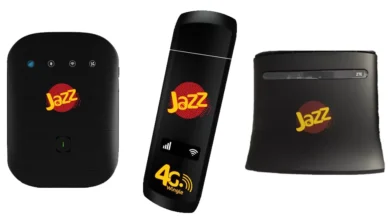
In today’s hybrid world, the line between professional productivity and personal entertainment has blurred. Whether you’re clocking hours on spreadsheets or diving into an immersive gaming session after work, having the best monitor for work and play can make a world of difference. But with so many models, sizes, and features on the market, how do you find the perfect match?
This comprehensive guide will help you navigate the clutter and choose a monitor that balances performance, comfort, and versatility for both work and play.
Understanding Your Needs: Work vs. Play
Before diving into specs, take a moment to define how you’ll use your monitor.
-
Work Requirements: If your day job involves emails, documents, design software, or programming, you’ll want a display that offers clarity, accurate colors, and eye comfort for long use.
-
Gaming Demands: Gamers prioritize high refresh rates, low response times, and immersive visuals to gain that competitive edge.
So, what’s the sweet spot? A dual-purpose monitor that can handle both professional and recreational tasks without compromise.
Key Features to Consider
Screen Size and Resolution
Screen size matters more than you think—especially when multitasking or gaming.
-
24″–27″: Perfect for general productivity and casual gaming.
-
27″–32″: Great for media professionals and gamers wanting more immersion.
-
34″+ (Ultrawide): Ideal for multitaskers and simulation/strategy gamers.
Pair size with the right resolution:
-
Full HD (1920×1080): Standard for budget users.
-
QHD (2560×1440): Best value for productivity and mid-level gaming.
-
4K (3840×2160): Crystal-clear detail for creative professionals and premium entertainment.
Refresh Rate and Response Time
-
Refresh Rate: Measured in Hz, it determines how many frames per second your screen can display. For gaming, aim for 144 144Hz or more.
-
Response Time: Lower is better. A 1ms to 5ms response time ensures smooth visuals, especially during fast-paced gameplay.
Even for work, smoother visuals can reduce motion blur during scrolling or video calls.
Color Accuracy and Panel Type
Different panel types serve different needs:
-
IPS (In-Plane Switching): Best for color accuracy and wide viewing angles—perfect for graphic designers and everyday use.
-
VA (Vertical Alignment): Higher contrast and deeper blacks—great for multimedia.
-
TN (Twisted Nematic): Fast response times but poor color reproduction—mostly for budget gaming monitors.
For hybrid use, IPS panels strike the best balance.
Connectivity and Ports
Make sure your monitor can connect to all your devices:
-
HDMI: Standard for gaming consoles and PCs.
-
DisplayPort: Preferred for high-resolution, high-refresh setups.
-
USB-C/Thunderbolt 3/4: Ideal for modern laptops and docking stations—great for professionals.
-
Built-in USB Hub: Helps streamline your setup by powering accessories.
Ergonomics and Adjustability
A monitor that adjusts to your posture enhances both comfort and productivity.
Look for:
-
Height adjustment
-
Tilt and swivel
-
Pivot rotation
-
VESA mount compatibility for custom arm mounts
These features reduce neck and back strain during long work sessions or marathon gaming nights.
Eye Care and Comfort Features
Staring at a screen for hours can strain your eyes. That’s why comfort tech is essential.
Look for:
-
Flicker-free technology
-
Low blue light filters
-
Anti-glare coating
These features are critical if you work from home or enjoy late-night gaming.
Single vs. Dual Monitor Setup
If you’re a multitasker, you’ve probably considered running dual monitors—and for good reason.
Dual-screen advantages:
-
View multiple windows side by side
-
Stream and game simultaneously
-
Increase work efficiency
Alternative: Ultrawide Monitors
-
A 34″ or 49″ ultrawide can simulate dual screens without bezels.
-
Perfect for financial analysts, content creators, and immersive gamers.
Best Monitor Sizes by Use Case
| Use Case | Recommended Size |
|---|---|
| Office & Basic Productivity | 24″–27″” |
| Multitasking Professionals | 27″–32″” |
| Video Editing & Design | 32″–34″ QHD or 4″K |
| Gaming Enthusiasts | 27″–32″ with 144 Hz”+ |
| Streamers & Sim Gamers | 34″–49″ Ultrawid”e |
Budget Categories and What You Get
Under $200
-
Best for students or basic home offices
-
Usually 24″–27″ Full HD
-
Decent for web browsing and light gaming
$200–$500
-
Sweet spot for most hybrid users
-
27″ QHD or even Hz gaming monitors
-
IPS panels, better color and refresh rates
$500+
-
Premium range with 4K, ultrawide, or high refresh
-
Ideal for video editors, professionals, or competitive gamers
-
Features like HDR10, USB-C hub, G-Sync/FreeSync included
Recommended Monitor Types for Different Users
For Office Professionals + Casual Gamers
-
27″ QHD IPS
-
75Hz refresh rate, ergonomic stand
-
Example: Dell UltraSharp U2723QE
For Designers + Competitive Gamers
-
32″ IPS with high color accuracy + 144
-
Low response time and adaptive sync
-
Example: LG 32GP850-B
For Streamers and Content Creators
-
34″ ultrawide, high contrast, multiple inputs
-
Built-in KVM switch or USB-C for devices
-
Example: ASUS ProArt PA348CGV
For Remote Workers
-
Eye care tech, webcam compatibility, USB-C hub
-
27″ IPS with built-in speakers
-
Example: BenQ EW2780U
Top Brands to Consider
While specs are important, brand reputation ensures durability, after-sales service, and consistent performance.
-
Dell—renowned for business monitors
-
ASUS—Wide variety of gaming-focused screens
-
LG—Excellent ultrawides and color-accurate displays
-
BenQ—Eye-care and creative monitors
-
Samsung—Innovative curved and QLED displays
-
Acer—Budget-friendly gaming options
Common Mistakes to Avoid
-
Focusing only on refresh rate: High Hz is great, but not at the expense of resolution or color.
-
Buying too small or too large: Get the right size for your desk space and eyesight.
-
Ignoring connectivity: Don’t end up with a monitor that lacks USB-C if your laptop only has that.
-
Underestimating eye care: Long-term comfort is as important as display quality.
Future-Proofing Your Purchase
As tech evolves, so should your setup. Keep these trends in mind:
-
OLED and Mini-LED monitors are emerging with better contrast and efficiency
-
USB4 and Thunderbolt 4 offer higher speeds and charging
-
AI-powered display modes that adapt brightness and contrast automatically
-
Built-in docks and smart home integration for seamless setups
Investing a bit more today can save you money and hassle down the line.
Conclusion
Finding the best monitor for work and play doesn’t have to be complicated. The right model enhances your productivity, enriches your entertainment, and protects your eyes in the long run.
Focus on what matters most to you—whether it’s immersive graphics for games, precise color accuracy for design, or multiple ports for workflow efficiency. And don’t forget, comfort features and build quality are just as important as flashy specs.
Ready to Level Up Your Screen Time?
Explore your options with confidence and pick a monitor that’s built for both business and pleasure. Whether you’re working hard or playing harder, the right screen makes all the difference.











